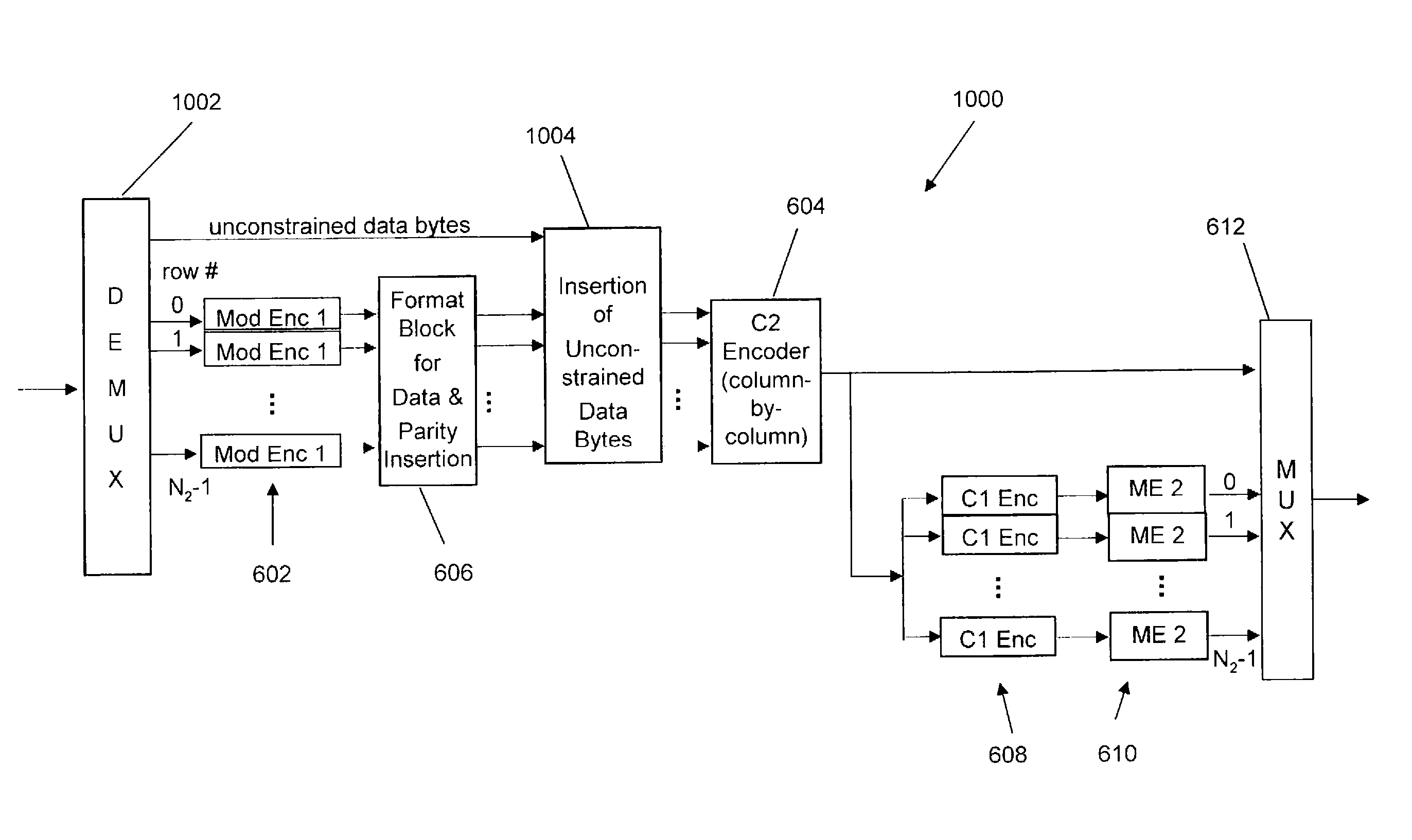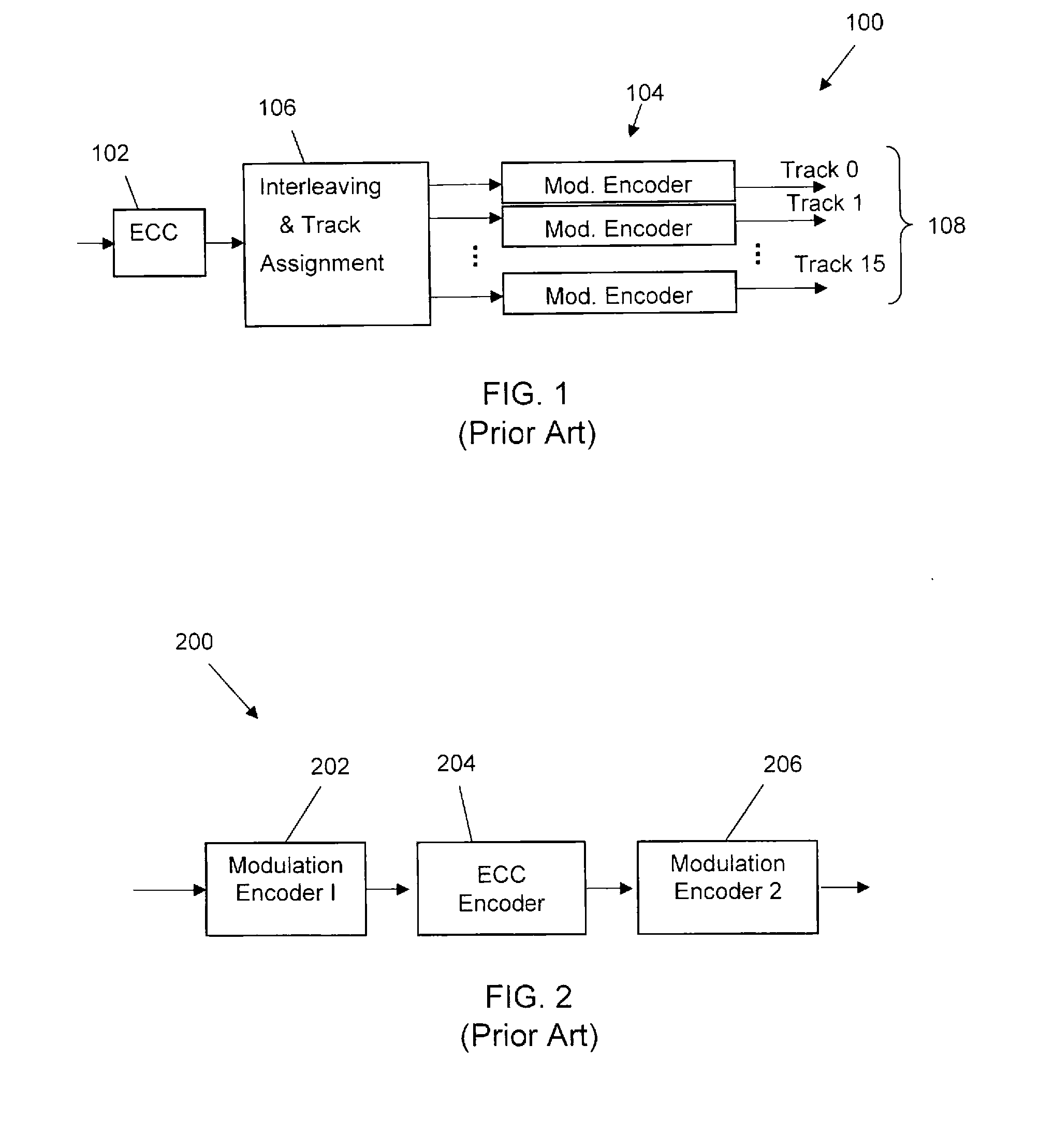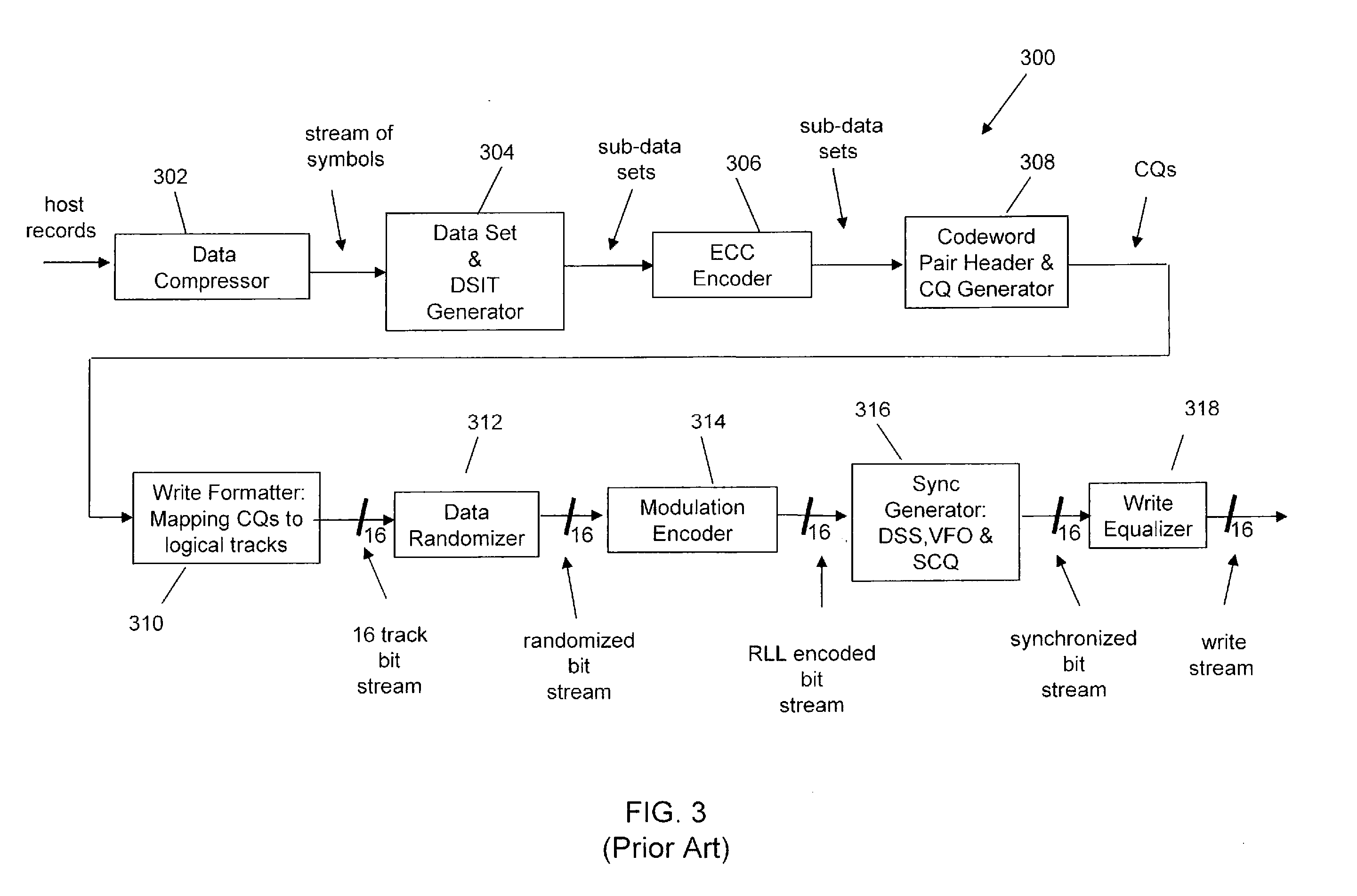Reverse concatenation for product codes
a product code and reverse concatenation technology, applied in the field of reverse concatenation of product codes, can solve the problems of ignoring the original modulation constraints, presenting significant drawbacks, and ignoring the specific issues of known rc schemes
- Summary
- Abstract
- Description
- Claims
- Application Information
AI Technical Summary
Problems solved by technology
Method used
Image
Examples
second embodiment
[0045]By choosing longer C2-codes of essentially the same rate as the LTO-3 code, the performance of the C2-code may be improved. The present invention provides the reverse concatenation (RC) scheme, which is based on the Reed-Solomon (RS) code with parameters [N2=96, K2=80, d2=17] over the Galois field GF(256), where N2 denotes the length, K2 the dimension, and d2 the minimum Hamming distance of the C2-code. Since the RS-code has length 96, the corresponding RC scheme employs an unencoded user data array with N2=96 rows. An example of such an unencoded user data array of size N2×U=96×398, with U=398 unencoded user bytes per row, is illustrated in TABLE VI.
TABLE VIExample of an unencoded user data array with N2 = 96 rows012. . .397 0 0 1 2. . . 397 1 398 399 400. . . 795→→→→→7879314423144331444. . .3183979→→→→→95378103781137812. . .38207
[0046]Each row of the unencoded user data array is passed through the first modulation encoder 602 and, thus, satisfies a modulation constraint a...
third embodiment
[0053]The present invention further provides an RC architecture which is based on partial interleaving of a predetermined number of unconstrained data bytes and illustrates the versatility of the empty locations generated by the formatting block 606. In the first two embodiments, described above, the C2-encoder inserts parity bytes into the empty locations. However, the empty locations may also be used in a different way: some may be filled with C2-parity bytes and some may be filled with unconstrained data bytes. FIG. 10 illustrates a block diagram of a RC architecture 1000 for product codes in which unconstrained data bytes are inserted into some of the empty locations provided by the formatter 606 and parity bytes are inserted into the remaining empty locations. The insertion of the unconstrained data bytes occurs prior to the C2-encoder because the C2-encoder needs these bytes for computing the parity bytes. The unconstrained data bytes are generated by a de-multiplexer 1002. Th...
PUM
 Login to View More
Login to View More Abstract
Description
Claims
Application Information
 Login to View More
Login to View More - R&D
- Intellectual Property
- Life Sciences
- Materials
- Tech Scout
- Unparalleled Data Quality
- Higher Quality Content
- 60% Fewer Hallucinations
Browse by: Latest US Patents, China's latest patents, Technical Efficacy Thesaurus, Application Domain, Technology Topic, Popular Technical Reports.
© 2025 PatSnap. All rights reserved.Legal|Privacy policy|Modern Slavery Act Transparency Statement|Sitemap|About US| Contact US: help@patsnap.com



